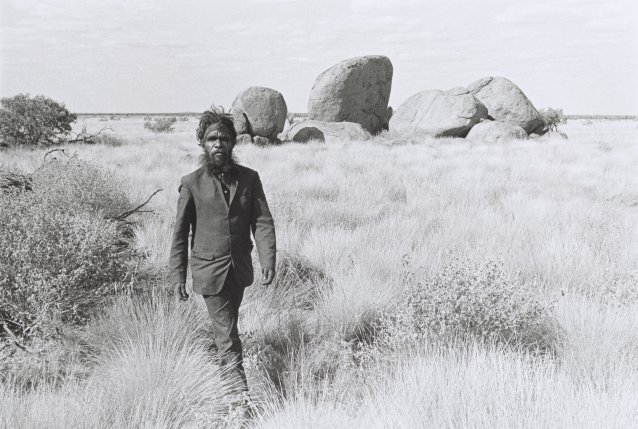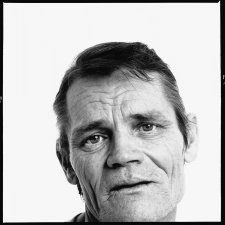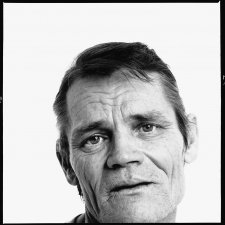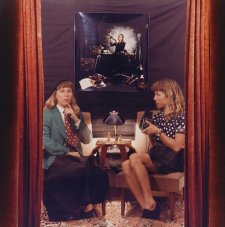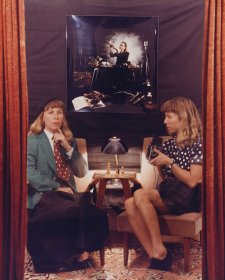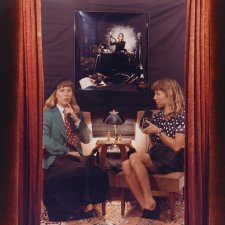John Tjakamarra (c. 1937–1992), a Pintupi man born north of Kiwijurra, south of Kintore, made the long walk into the Papunya settlement with his family in the early 1960s. The Papunya Tula painting movement, usually dated to the arrival of administrator Geoffrey Bardon in the early 1970s, saw Anmatyere, Luritja, Arrernte, Warlpiri and Pitjantjatjara residents commit stories traditionally expressed in the soil or on the body to permanent, portable and marketable media: paint and boards. Tjakamarra was one of the early painters at the settlement. Late in life, Tjakamarra returned to Tjukurla, near his own Country. Jon Rhodes met him at Yayayi Bore in 1974, when Rhodes first started taking photographs on the theme of relationship to land. Since then Rhodes has told photographic stories of life in many First Nations communities. Photographs from his exhibition Cage of Ghosts, documenting attempts to preserve and protect important Aboriginal cultural sites in south-eastern Australia, were published in his book of the same name in 2018.
Purchased 2008
© Jon Rhodes
The National Portrait Gallery respects the artistic and intellectual property rights of others. Works of art from the collection are reproduced as per the
Australian Copyright Act 1968 (Cth). The use of images of works from the collection may be restricted under the Act. Requests for a reproduction of a work of art can be made through a
Reproduction request. For further information please contact
NPG Copyright.
